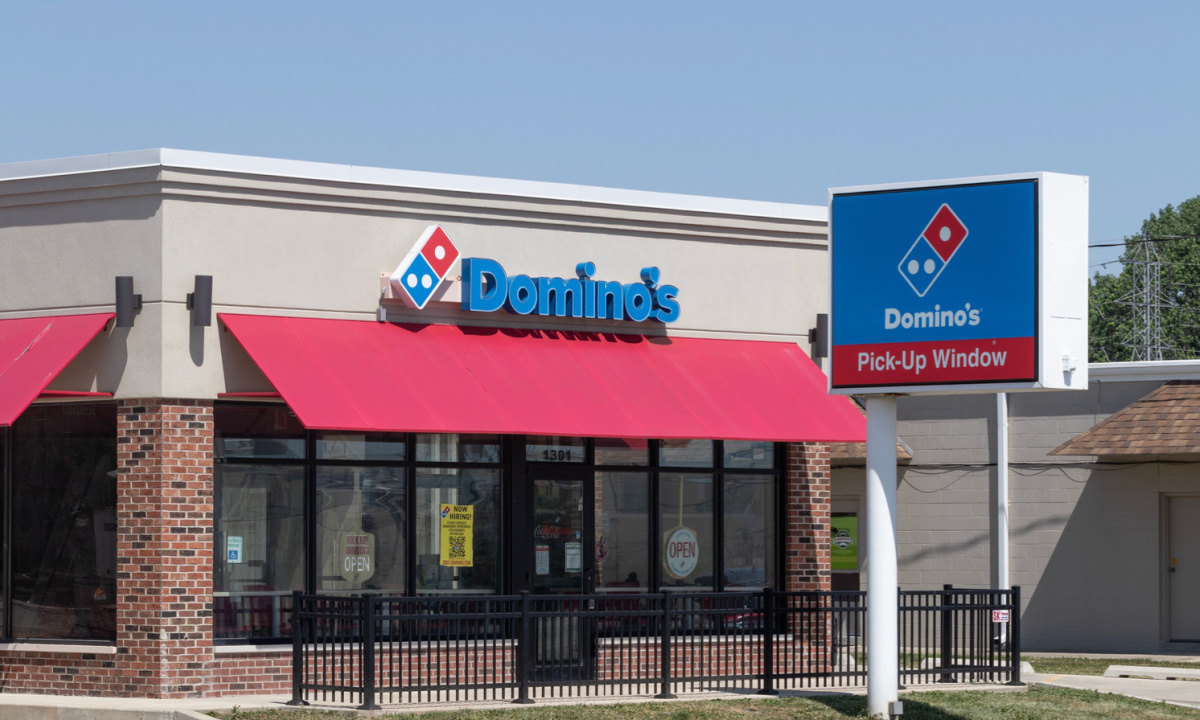Domino’s Counterbalances Uber Eats Deal With Loyalty Relaunch

Following its decision to finally get on Uber Eats’ marketplace, Domino’s Pizza is stepping up its efforts to maintain engagement through its direct channels by offering easier-to-redeem loyalty rewards.
On a call with analysts Monday (July 24) discussing the company’s second-quarter FY 2023 financial results, the quick-service restaurant (QSR) giant, which has more than 20,000 locations around the world, said it is lowering the threshold to receive perks in an effort to keep customers coming back.
“[Our] new and improved loyalty program that will be launching in the US in September of this year. The program will reduce the requirements to earn and redeem loyalty points,” Domino’s CEO Russell Weiner said. “This will positively impact our carrier customers as well as help us retain our current and new delivery customers.”
He noted that, when “most brands” relaunch their programs, the customer is usually “on the short end,” since typically these decisions come when the restaurant is “trying to drive a little bit more profitability,” leading to perks being watered down or removed.
“We’re doing the exact opposite here,” Weiner said.
According to data from PYMNTS’ March study, “Connected Dining: Consumers Like the Taste of Discount Meals,” which drew from a February survey of more than 1,800 U.S. consumers, 51% use restaurant loyalty programs, with 49% of all diners participating in these programs at quick-service restaurants (QSRs).
Additionally, inflation has significantly boosted demand for perks, the study found. Between March 2022 and February of this year, the share of consumers who reported that they received a discount on their most recent restaurant purchase rose from 14% to 26%.
Domino’s, for its part, is leveraging the program to incentivize pickup sales, among other benefits, which yield higher margins for the brand, offering a lower threshold for redeeming points on carryout than delivery.
As the pizza chain rolls out its availability on Uber Eats, Weiner contended that the chain’s decision to finally work with aggregators comes after ensuring that sales through these channels would only add to its direct delivery business.
Research from PYMNTS’ study “Connected Dining: Rising Costs Push Consumers Toward Pickup,” which drew from a survey of more than 2,100 U.S. consumers earlier this year, revealed that 39% of restaurant customers reported having placed their last order for pickup, and just 10% did the same for delivery.
Weiner explained that “the work we’ve done internationally and the studies we’ve done here in the states” show that the company is capable of running its third-party presence independently of its existing business without cannibalizing its own sales, and that, “in the past,” that ability was not “always there.”
Plus, there were the capacity challenges that Domino’s was dealing with in recent years.
“To be perfectly honest, we are a delivery company, and we needed to be able to deliver our own orders before we took on incremental, and we’re absolutely doing that right now, as you can see with the improvement in service time,” Weiner said. “And we’re ready for that next wave of orders.”
He noted that, even before launching on aggregators, Domino’s has held a massive share of the U.S. pizza delivery market, with the brand receiving 1 in 3 such orders.

